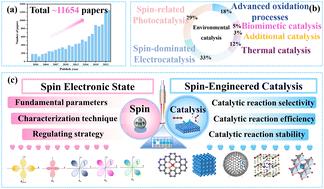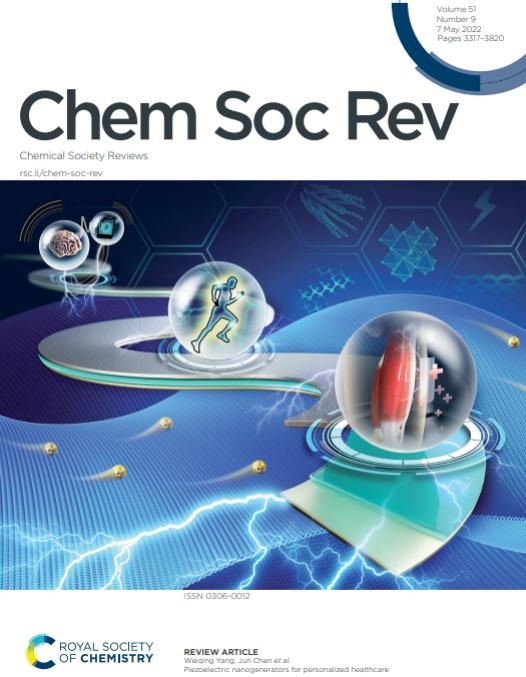Spin-engineered catalysts: unlocking new frontiers in environmental and energy catalysis applications
IF 39
1区 化学
Q1 CHEMISTRY, MULTIDISCIPLINARY
引用次数: 0
Abstract
Environmental catalysis is pivotal in addressing pollution and advancing energy conversion technologies. Spin, an intrinsic particle property of a material, significantly influences catalytic reactions by altering the electronic structure of active sites, radical reactions, and electron transfer behavior, all of which impact reaction selectivity and mechanisms. Understanding the spin properties within advanced materials is essential for elucidating the structure–activity relationships between the spin characteristics and the catalytic mechanism. This review begins by outlining the fundamental concepts and parameters associated with spin. It provides a comprehensive overview of the primary techniques and methodologies employed to characterize spin properties and strategies for modulating spin alignment through external fields and internal structural adjustments. The discussion then progresses to examine how spin characteristics influence various aspects of environmental catalysis, including reaction kinetics, thermodynamics, stability, pathways, and mechanisms of catalysis. In the concluding sections, the authors highlight the current challenges in applying spin concepts to environmental catalysis and propose recommendations to address these obstacles, while outlining potential directions for future research. Exploring spin properties can unveil the core mechanisms of environmental catalytic processes and facilitate the design of more efficient spin engineered catalysts, advancing the frontiers of catalytic applications and progress in environmental and energy sciences.

自旋工程催化剂:解锁环境和能源催化应用的新领域
环境催化是解决污染和推进能源转换技术的关键。自旋是材料的一种固有粒子性质,它通过改变活性位点的电子结构、自由基反应和电子转移行为来显著影响催化反应,所有这些都影响反应的选择性和机理。了解先进材料的自旋特性对于阐明自旋特性与催化机理之间的构效关系至关重要。本文首先概述了与自旋有关的基本概念和参数。它提供了用于表征自旋特性的主要技术和方法的全面概述,以及通过外部场和内部结构调整调节自旋排列的策略。然后讨论进一步探讨自旋特性如何影响环境催化的各个方面,包括反应动力学、热力学、稳定性、途径和催化机制。在结语部分,作者强调了将自旋概念应用于环境催化的当前挑战,并提出了解决这些障碍的建议,同时概述了未来研究的潜在方向。探索自旋性质可以揭示环境催化过程的核心机制,有助于设计更高效的自旋工程催化剂,推进催化应用的前沿和环境与能源科学的进步。
本文章由计算机程序翻译,如有差异,请以英文原文为准。
求助全文
约1分钟内获得全文
求助全文
来源期刊

Chemical Society Reviews
化学-化学综合
CiteScore
80.80
自引率
1.10%
发文量
345
审稿时长
6.0 months
期刊介绍:
Chemical Society Reviews is published by: Royal Society of Chemistry.
Focus: Review articles on topics of current interest in chemistry;
Predecessors: Quarterly Reviews, Chemical Society (1947–1971);
Current title: Since 1971;
Impact factor: 60.615 (2021);
Themed issues: Occasional themed issues on new and emerging areas of research in the chemical sciences
 求助内容:
求助内容: 应助结果提醒方式:
应助结果提醒方式:


